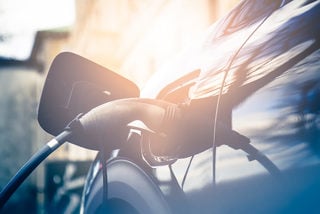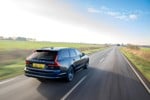By Dhruv Parekh UK chief executive Masternaut
All indicators suggest that the popularity of hybrid and electric vehicle will continue to increase in coming years, with the International Energy Agency predicting that global electric vehicle (EV) numbers will grow from 3 million to 125 million by 2030.
Alongside this worldwide trend, the UK government has made a firm commitment to reducing its reliance on fossil fuels, with petrol and diesel vehicles being outlawed from 2040.
While consumers are beginning to embrace popular EV makers such as Tesla, the tide is yet to turn with regard to EVs becoming a majority on UK roads.
According to the SMMT, registrations of alternative fuel cars still account for less than 6% of the overall market.
Yet with fleet and business sales continuing to bolster a year-on-year increase in new vehicle registrations our industry has a key role to play in driving this essential change, not to mention an opportunity to lead.
At the same time pressure is coming from our customers too, with eco-friendly practices often becoming conditions of tenders and certainly a prerequisite for any company with serious concern for its reputation.
Masternaut data shows that even the most proactive industries currently have just under 2% electric or hybrid vehicle penetration, while the majority of sectors have achieved less than 0.5% and this change can seem daunting to many.
Switching to low-emissions vehicles of course won’t happen overnight, and gradually integrating alternative vehicles into fleets over the next twenty years will be key to a smooth switchover, which doesn’t incur excessive financial or time costs for fleets.
Rather it should be seen as part of a successful low-carbon strategy.
Making the switch to EVs requires significant assessment and analysis and the logistics of charging the vehicles is among the primary concerns.
Adapting the premises to cater for EVs by installing charging points is a definite requirement, but so too is ensuring employees can charge their vehicles when at home or on the road.
Range anxiety is another issue. My drivers travel 300 miles in a day? Is it practical for them to use an electric car?
These questions bring us to another important element of a low-carbon strategy. Switching up the fleet for EVs and hybrids is just one way of reducing our emissions.
In order to truly reduce our impact on the environment, we should be looking too to reduce the road miles we incur.
Does that meeting need to happen in person, or would a conference call suffice? Could someone take a train, rather than driving?
Lowering carbon emissions needs a holistic approach and while greener vehicles offer us a fantastic technological solution, they are just one part of the puzzle.
Planning needs to take all of the likely fleet requirements into account, while considering the individual circumstances of the people involved.
Start early and look at the whole picture. And where vehicles are still needed, make sure they’re eco-friendly and future-proof.





















Login to comment
Comments
No comments have been made yet.